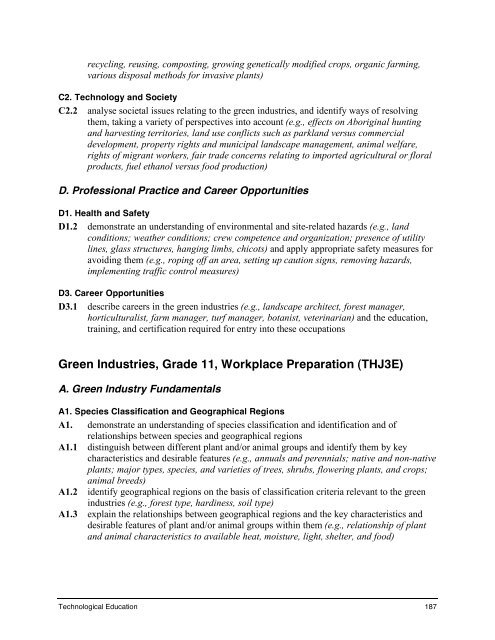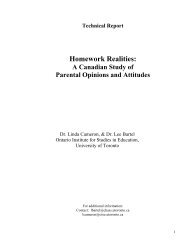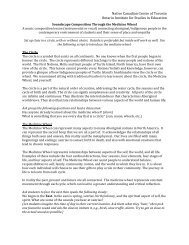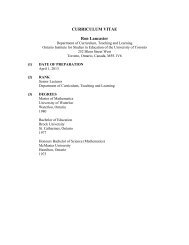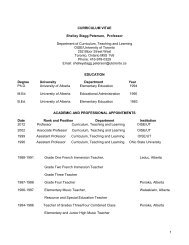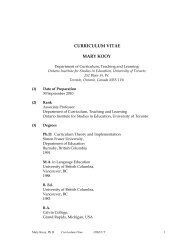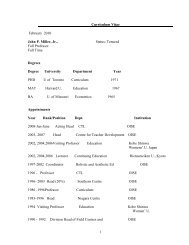The Ontario Curriculum, Grades 9-12 - Ministère de l'éducation ...
The Ontario Curriculum, Grades 9-12 - Ministère de l'éducation ...
The Ontario Curriculum, Grades 9-12 - Ministère de l'éducation ...
Create successful ePaper yourself
Turn your PDF publications into a flip-book with our unique Google optimized e-Paper software.
ecycling, reusing, composting, growing genetically modified crops, organic farming,<br />
various disposal methods for invasive plants)<br />
C2. Technology and Society<br />
C2.2 analyse societal issues relating to the green industries, and i<strong>de</strong>ntify ways of resolving<br />
them, taking a variety of perspectives into account (e.g., effects on Aboriginal hunting<br />
and harvesting territories, land use conflicts such as parkland versus commercial<br />
<strong>de</strong>velopment, property rights and municipal landscape management, animal welfare,<br />
rights of migrant workers, fair tra<strong>de</strong> concerns relating to imported agricultural or floral<br />
products, fuel ethanol versus food production)<br />
D. Professional Practice and Career Opportunities<br />
D1. Health and Safety<br />
D1.2 <strong>de</strong>monstrate an un<strong>de</strong>rstanding of environmental and site-related hazards (e.g., land<br />
conditions; weather conditions; crew competence and organization; presence of utility<br />
lines, glass structures, hanging limbs, chicots) and apply appropriate safety measures for<br />
avoiding them (e.g., roping off an area, setting up caution signs, removing hazards,<br />
implementing traffic control measures)<br />
D3. Career Opportunities<br />
D3.1 <strong>de</strong>scribe careers in the green industries (e.g., landscape architect, forest manager,<br />
horticulturalist, farm manager, turf manager, botanist, veterinarian) and the education,<br />
training, and certification required for entry into these occupations<br />
Green Industries, Gra<strong>de</strong> 11, Workplace Preparation (THJ3E)<br />
A. Green Industry Fundamentals<br />
A1. Species Classification and Geographical Regions<br />
A1. <strong>de</strong>monstrate an un<strong>de</strong>rstanding of species classification and i<strong>de</strong>ntification and of<br />
relationships between species and geographical regions<br />
A1.1 distinguish between different plant and/or animal groups and i<strong>de</strong>ntify them by key<br />
characteristics and <strong>de</strong>sirable features (e.g., annuals and perennials; native and non-native<br />
plants; major types, species, and varieties of trees, shrubs, flowering plants, and crops;<br />
animal breeds)<br />
A1.2 i<strong>de</strong>ntify geographical regions on the basis of classification criteria relevant to the green<br />
industries (e.g., forest type, hardiness, soil type)<br />
A1.3 explain the relationships between geographical regions and the key characteristics and<br />
<strong>de</strong>sirable features of plant and/or animal groups within them (e.g., relationship of plant<br />
and animal characteristics to available heat, moisture, light, shelter, and food)<br />
Technological Education 187


